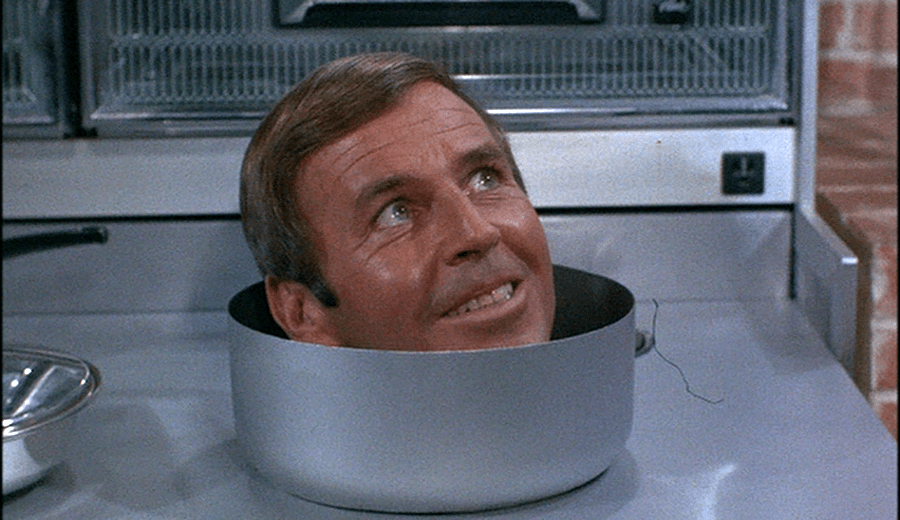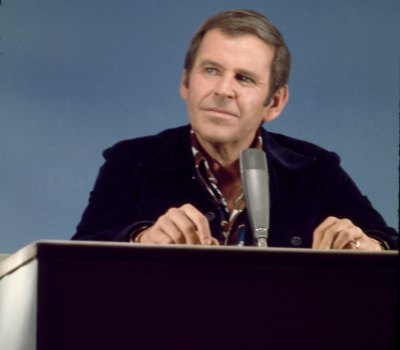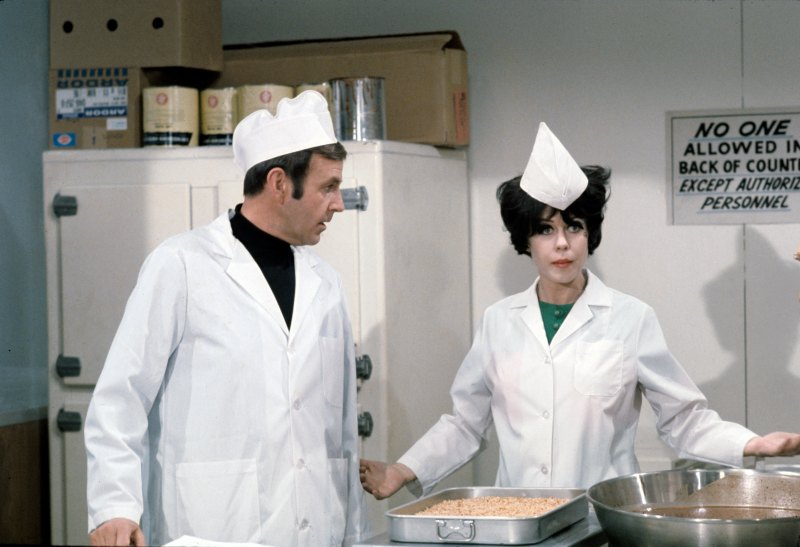
Screen Gems
Here’s What Happened to Paul Lynde Before, During and After ‘Bewitched’ and ‘The Hollywood Squares’
When Dick Van Dyke appeared on an episode of A&E’s Biography devoted to Paul Lynde, he reflected on co-starring with him in the Broadway and film versions of Bye Bye Birdie as well as Paul’s character in both of Harry McAfee. “That part was made for Paul Lynde,” Dick laughed. “Nobody else could play that guy. He played a common man who looked aghast at the world around him and couldn’t deal with it. He was totally helpless at all times and was very cranky about it.”
It’s a funny description that in many ways seemed to represent the public persona Paul, who passed away 38 years ago on January 10, 1982, presented to the world in films and, especially, on Classic TV shows. And while he never managed his own hit series, he made memorable appearances on dozens of the biggest sitcoms of the 1960s and 1970s, most notably F-Troop, The Munsters, I Dream of Jeannie and, of course, Bewitched (which, along with The Paul Lynde Show, is currently airing on the Antenna TV network). And on top of that, there was his taking up residence from 1968 to 1981 in the center square of the game show The Hollywood Squares that really allowed him to connect with viewers.

On that show, which aired five days a week, Paul, like the rest of the nine contestants, offered up snappy answers to questions that would hopefully allow players to achieve the required tic-tac-toe that would lead to victory. But what separated him from the others was his particular brand of snark — and the speed of his responses — which made America truly fall in love with him.
Erin Murphy, who played young Tabitha on Bewitched, reflects to Closer in an exclusive interview, “I think he was a lot like Robin Williams — just one of those people who’s naturally funny. His voice is funny, his mannerisms are funny. I loved working with him.”
“Everybody loved him,” offers Cathy Rudolph, his friend and author of Paul Lynde: A Biography — His Life, His Love(s) and His Laughter, in an exclusive interview. “I still have people writing and telling me how much they loved him, that they think he’s great, and they’re still amazed at what a genius he was with those one-liners that came out of his head on Hollywood Squares. Of course, I hate to break their hearts, but those lines did not all come out of his head.” She emphasizes that the answers were not provided, just his jokey responses. “They were scripted and he would admit that later, though he was reluctant to do so. He didn’t want people to all of a sudden think that he wasn’t smart or witty, so he kind of teetered on that when asked about it.”

Herbie J Pilato, author of Twice Upon a Star: The Bewitched Life and Career of Elizabeth Montgomery and Bewitched Forever, adds, “He was ‘everyman funny.’ He said some things we all were thinking, and that’s a gift to be able to key automatically to the masses. He hit the funny bone in each of us.” As to his jokes being scripted, “It didn’t matter, because he was the one that made those lines funny. If someone else said them, those lines would not have been as hilarious. It’s all about the delivery, and his was top-notch.”
Harry Friedman, associate producer and writer for The Hollywood Squares, told The Archive of American Television, “Paul Lynde clearly had some issues; he had some demons. But when he was on, he was on. He could sell a joke like nobody else, because there was an anticipation that what he was about to say was going to be funny. And so the audience was primed to laugh when he delivered the joke.”

And yet, suggests actress Karen Valentine who co-starred with him in the TV movie Gidget Grows Up and on The Hollywood Squares, the studios weren’t as primed to move him to the position of stardom he so desperately yearned for. “They didn’t take advantage of having him play the funny uncle or someone eccentric, like he did on Bewitched,” she says in an exclusive interview. “To cast him as a traditional father didn’t work. In Bye Bye Birdie he was the father, but he was disgruntled about the way things were going, so that worked. But that’s a one-shot. On a series, I don’t think they ever tapped into the magic of what he could do or the funniness he brought to the table. It was trying to fit him in a box where he didn’t fit.”
For much more on Paul Lynde, please scroll down.
Be sure to check out and subscribe to our Classic TV & Film Podcast for interviews with your favorite stars!

ABC Photo Archives/ABC via Getty Images

Columbia/Kobal/Shutterstock

AP/Shutterstock

Getty Images

Courtesy Michael Airington

Mgm/Kobal/Shutterstock

Fairchild Archive/Penske Media/Shutterstock

Getty Images

Screen Gems

Courtesy Herbie J Pilato

Screen Gems

Getty Images

Screen Gems

ABC Photo Archives/ABC via Getty Images

Screen Gems

Screen Gems

Columbia Tri-Star Domestic Television

Sony Pictures Television

Columbia Tri-Star Domestic Television

Columbia Pictures

Mediapunch/Shutterstock

Getty Images

Fairchild Archive/Penske Media/Shutterstock

CBS Films

Columbia Pictures

Bei/Shutterstock

Fairchild Archive/Penske Media/Shutterstock

Embassy Pictures

Courtesy Cathy Rudolph

Sony Pictures Television

Getty Images

20th Century Fox

Screen Gems











































